On this dayFeb 02, 1909
The Roundup
Drawn by its booming steel mills and factories, Black Americans were moving to industrial Pittsburgh in record numbers at the start of the 20th century. The men, women, and children who arrived on northbound trains were fleeing the racial terror lynchings, convict leasing, Black Codes, and other horrors of the Jim Crow South.
Pittsburgh held out the hope of jobs. There was also a vibrant Black community, with deep religious, cultural, and anti-slavery roots dating back to the days of the Underground Railroad. The heart of that community was a working-class district known as “the Hill.”
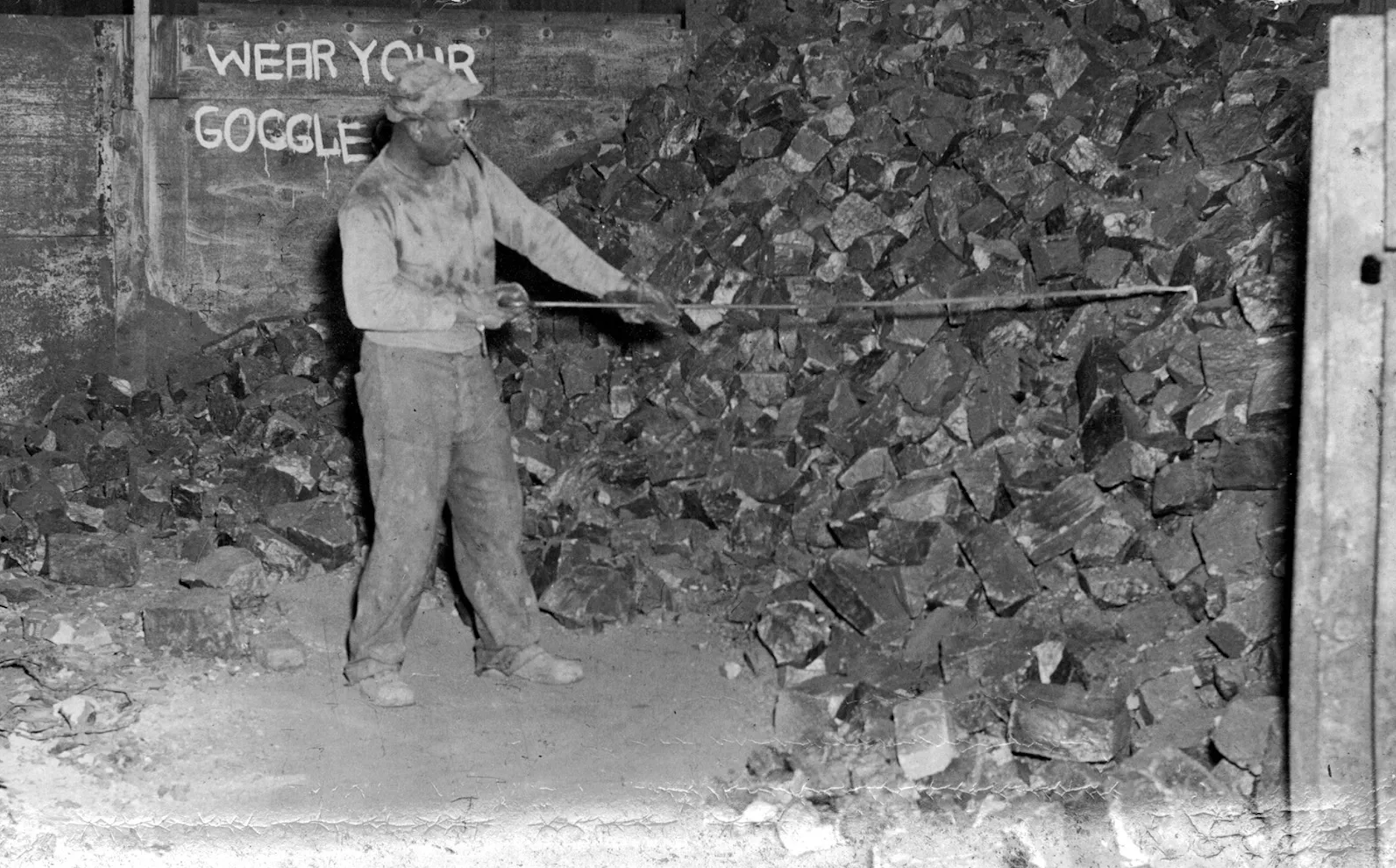
A steel worker at a Pittsburgh mill. (Rivers of Steel Archives)
As in other Northern cities, newcomers to Pittsburgh were confronted with racial hostility and rigidly enforced segregation. Many crowded into boarding houses on the lower slopes of “The Hill” where they breathed in the sulfurous air of the steel mills.
And there loomed another, more immediate danger—the police.
On the moonless evening of February 2, 1909, as the men and women of the Hill were finishing their dinners and tucking in their children, a hundred white police officers fanned out across the district. Led by what one newspaper described as a “Negro-hating” police captain, they barged into homes, saloons, pool halls, and other places where people congregated, and arrested every Black man who could not immediately provide proof of employment. The men were crammed into police wagons waiting to deliver them to cells at Central Police Station. By 2 am all five wagons were full.
More than 200 innocent Black men were arrested in Pittsburgh that night. The pretense for the roundup was a series of vague, unsubstantiated reports of “assaults” on white women and girls, and the deep racial hostility that had burdened Black people with a presumption of guilt and dangerousness since before the nation’s birth led Pittsburgh police to target Black men.
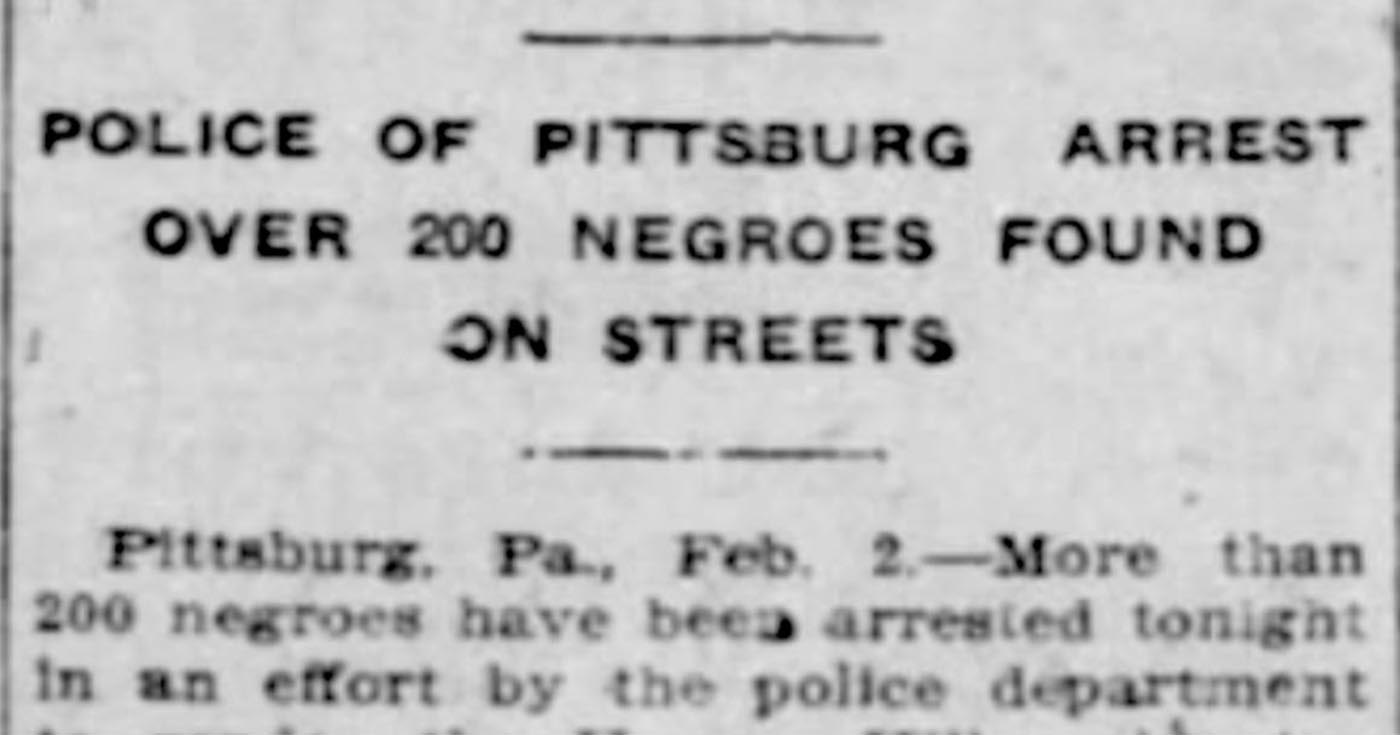
(York Daily)
More arrests followed in the days after the roundup—two men here, 15 there, as many as 150 for "loafing," perhaps for warmth, by steel-industry coke ovens in a nearby town. Some of the people huddled by the long rows of ovens were said to have fled the raid. All told, Black men arrested in the roundup and in smaller-scale police actions around it totaled about 400.
Irene Lucas, 22, had moved to Pittsburgh from Philadelphia with her husband. They were boarding with a storekeeper in the Hill while they both looked for work. On February 4, two days after the raid, Mrs. Lucas, who was Black, wrote a letter to her mother back in Philadelphia:
“Rob and I can’t find work now…Police are raiding the pool rooms on [rumors] of a Negro assaulting a white girl…There are 223 in jail, all Black. This scared me so bad that I am afraid to go out on the street. I don't know what to do. This is certainly a devil of a hole.”
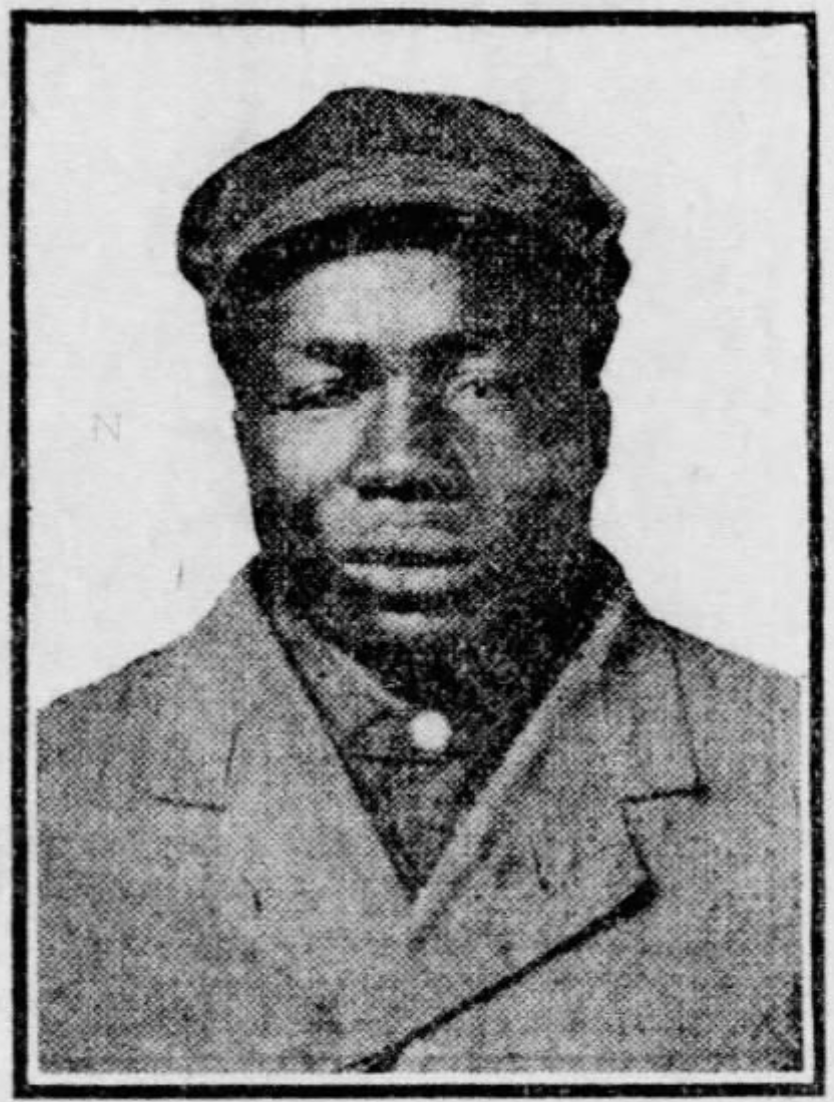
Rial Robert Lucas (The Pittsburgh Post)
Three days later, both Lucases were arrested. Irene Lucas was sent to the workhouse on the trumped-up charge of being a “suspicious person.” Her husband, Rial Robert Lucas, was charged with assaulting a white woman. There was no evidence substantiating the charge and several witnesses confirmed that Mr. Lucas had been applying for a job at the Carnegie Institute at the time of the alleged attack. His accuser had already twice identified a different person as the alleged perpetrator before changing her story.
A jury took 16 minutes to find Mr. Lucas guilty. He was sentenced to nine years in prison.
Reference to lynchings pervaded the cases arising from the roundup. A crowd of white men chanted “Lynch him! Lynch him!” as a plainclothes officer wrestled a Black man he’d just arrested to the pavement. News accounts said the officer had to draw his revolver and wave it at the crowd to keep them from attacking the man.
During a court proceeding before Mr. Lucas’s trial, the prosecutor suggested he was lucky to avoid a lynching. “Had the defendant been caught and charged with such a crime south of the Mason and Dixon Line,” the prosecutor said in court, “he would never have been fortunate enough to be placed on trial.”
The Cases Go to Court
The day after the roundup, the Black men caught up in it faced hours of “grilling examination,” as a newspaper said, by a white magistrate judge in a jam-packed courtroom.
And one by one, in nearly every case where men were accused of crimes, what little evidence was presented fell apart in court. Some accusers changed their minds and recanted. Others admitted they were not sure the defendant was the right man. A Hill clerk named Clarence Cook was exonerated after six witnesses testified that he was in a restaurant with them on Wylie Avenue, the Hill’s main thoroughfare, on the evening when police claimed he was in another part of town assaulting a white girl.
Even when criminal charges against Black men had not been proved, the magistrate sent them to the workhouse anyway on grounds that they were vagrants or suspicious persons. Two teenage white girls, who had reported being chased down a suburban road by two Black men, declined to testify against men police arrested, Tobias Sharkey and a man identified as E. Woodford. So a magistrate dismissed the charges but sentenced both Black men to 90 days in the workhouse for vagrancy.
John Moulton, a 39-year-old janitor, was sentenced to six months in the workhouse even though the magistrate admitted, “There is no evidence that you attempted to assault the girl.” Then he pronounced Mr. Moulton a suspicious person, and announced, “I will impose the maximum sentence, to show others, black or white, that women must be protected."
In one case, the magistrate sent a white woman to the workhouse for 60 days for having been arrested at a Hill saloon in the company of Black men. But first, he lectured her about the perils of race mixing. The police "are endeavoring to protect white women against Negroes, and here you are, associating with Negroes, spending your time in a Negro dive," the magistrate said, "giving the Negro the idea that a white woman is his legitimate prey."
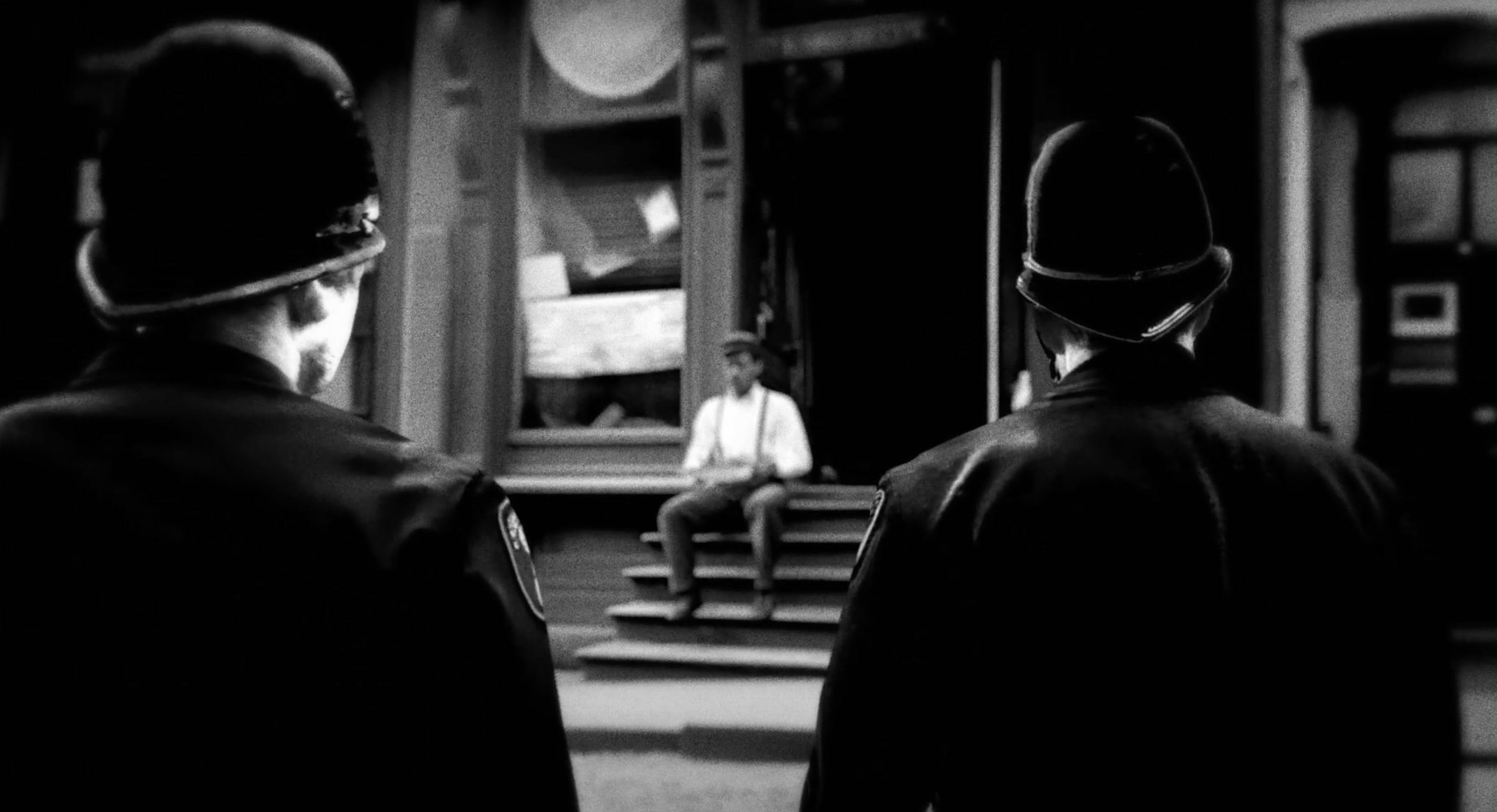
By then, Black community leaders were speaking out about the raid. The Rev. L.D.W. Mason, a Baptist minister who lived near Wylie Avenue in the Hill, beseeched the Pittsburgh Press to stop reporting allegations of crime in the Hill “until some are proven before the courts.” He wrote: “It is a sad thing to think of the great onslaught on my people made by the police. It is a thing which makes our nerves tremble, our limbs quake, and our very hearts reach up toward heaven in prayer for consolation.”
The Black community took pride in its activist history. Aging Civil War veterans still paraded in their U.S. Colored Troop uniforms. The Hill celebrated Frederick Douglass's birthday every year. It drew much of its civic energy from its churches—more than two dozen of them citywide. Among the ministers who pressed fearlessly for equal rights was the Rev. Carlton M. Tanner, pastor of the African Methodist Episcopal Church's Brown Chapel. He was the son of AME Bishop Benjamin Tucker Tanner and brother of the painter Henry Ossawa Tanner. He would soon be profiled among the "Men Of The Month" in the new NAACP magazine, The Crisis. He urged Pittsburgh's white trade unions to integrate. Wanting to help Black residents fleeing racial terror from the South, he pushed fellow clergy to "meet them at the trains."
The Laws Behind the Roundup
The laws that authorities used in the raid were about so-called “summary offenses.” Today a typical summary offense is a parking ticket, but all through the 19th and most of the 20th century, summary offenses included vagrancy (being out of work or unable to prove employment) and being an alleged “suspicious person.” These laws were used to target Black people and these were the charges brought against the vast majority of those arrested in the raid.
Soon after slavery was outlawed, Southern states began enacting vagrancy laws and other discriminatory policies and using them to criminalize and re-enslave Black people. These laws set the stage for “convict leasing,” in which tens of thousands of Black people were arrested on charges such as vagrancy and imprisoned and then leased to private railways, mines, and large plantations, where they earned no pay and labored under horrific and often deadly conditions.
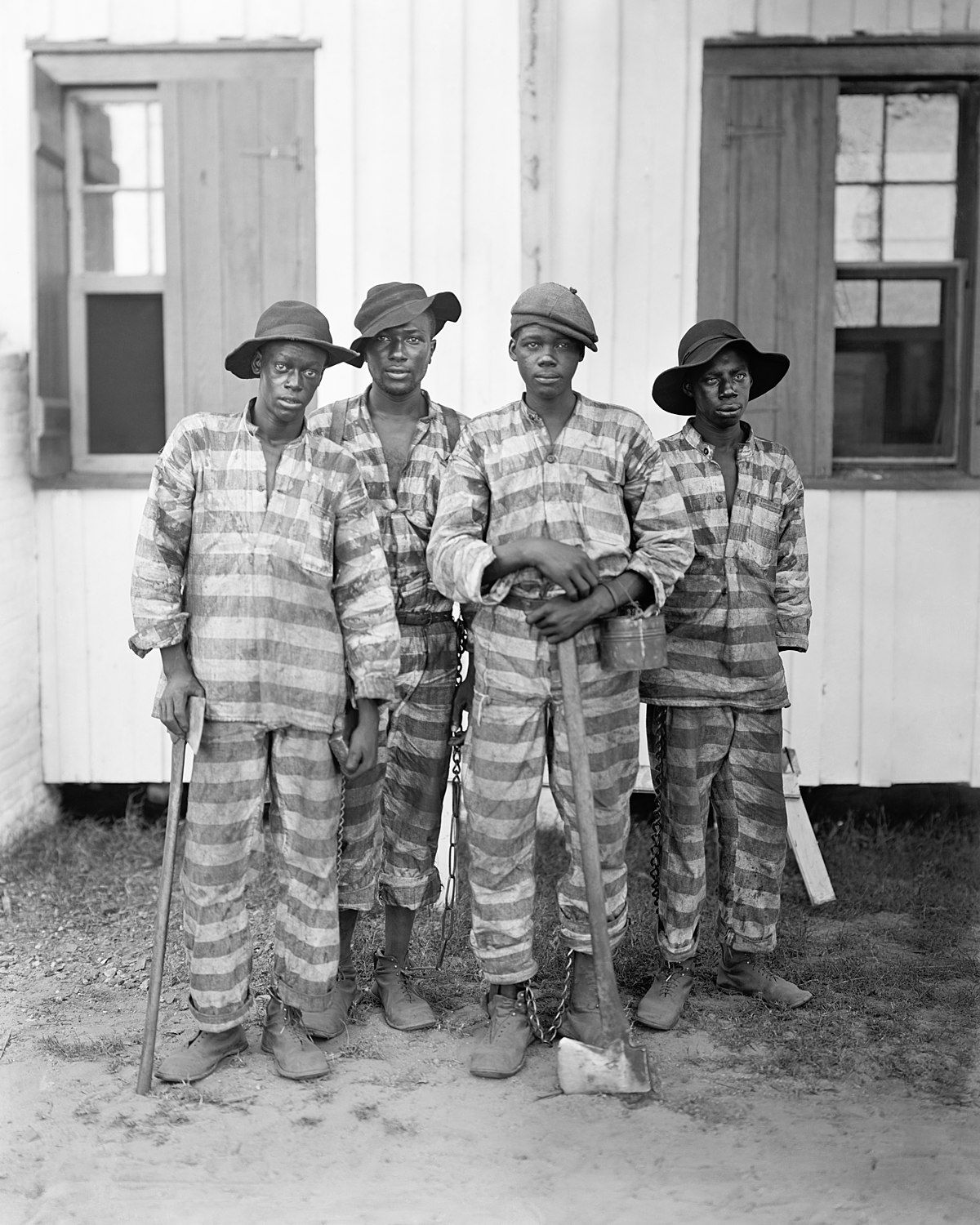
A group of incarcerated men leased to harvest timber in Florida, ca. 1915. (Library of Congress)
As Black people migrated to Pittsburgh, Philadelphia, New York City, and Chicago in increasing numbers to escape the Jim Crow South, Northern cities also began to pass new laws—and apply existing ones in discriminatory ways—to trap Black people and maintain racial hierarchy. These mass arrests in Pittsburgh are just one example of the way Black people were targeted and forced into involuntary labor for decades in America.
Though Pennsylvania did not allow its prisons to contract out incarcerated people’s labor, as in the South, its prisoners were still forced into hard labor without pay. The Allegheny County Workhouse, where magistrates sent Mrs. Lucas and many others arrested during and after the raid, forced its prisoners to work without pay until they hit a required quota—after which they could choose to do even more work and get paid tiny sums for it.
Pennsylvania passed vagrancy laws in the 19th century as a way to regulate and police formerly enslaved Black people in the state. In 1842, the Supreme Court ruled in Prigg v. Pennsylvania that the state could capture Black people in Pennsylvania labeled “fugitive slaves” and send them South to be re-enslaved—reasoning that Black people escaping slavery were analogous to vagrants.
Vagrancy laws were Pennsylvania’s version of Black Codes. Indeed, a study of early 19th-century court records found that in Philadelphia, nearly half of those convicted as vagrants were African American—a figure wildly disproportionate to the city’s minority Black population.
In Pittsburgh, after the roundup, the city’s top police officials publicly slandered the Black community as “a lot of bad Negroes” and “idlers”—that is, vagrants.
In fact, Pittsburgh’s Black community boasted a symphony orchestra, a mandolin string quartet, an orphanage, and a long list of literary societies and fraternal organizations. While most Black Pittsburghers worked as maids, launderers, laborers, janitors, and teamsters, they also held better-paid jobs as cement finishers, pharmacists, plasterers, and paperhangers. In 1909, a researcher counted 85 Black-owned businesses in Pittsburgh, including print shops, restaurants, a caterer, an insurance firm, a savings and loan, and a coal-and-coke company in nearby Homestead with 1,000 employees. An analysis of the 1900 Census found fewer than 1 in 15 Black adults unemployed. Public high schools were integrated, though the school board refused to hire Black teachers.
A young Black entrepreneur named Robert Vann was about to launch the Pittsburgh Courier as a national weekly (it would become one of the most widely read Black newspapers in the country). The Homestead Grays and Pittsburgh Crawfords were soon to become Negro League baseball titans.
The Workhouse and August Wilson
The great playwright August Wilson, who was born in the Hill in 1945, said that much of his work was informed by his early days spent listening to the stories of the Hill’s oldtimers. In his play Seven Guitars, set in 1948, Floyd Barton gets 90 days in the workhouse for vagrancy because he spent his last cent on his mom's funeral; police arrest Red Carter for having “more money than the law allowed.”
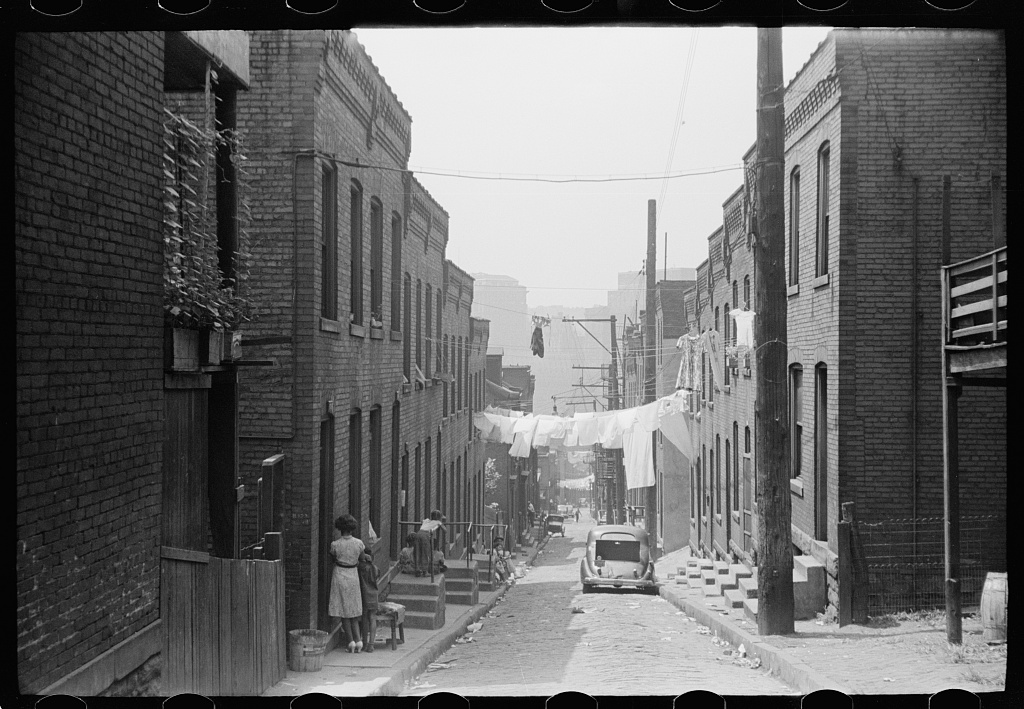
A street in the Hill in Pittsburgh, 1938. (Library of Congress)
'The Negro-Hating Officer' and the Police Chief
A letter to the editor signed "Ladies of the East End" praised Police Captain J.D. Murray and Magistrate Frank J. Brady for "the way they gave it to those [n-word]s who were raided the other day.” Captain Murray, who helped organize the roundup, was quoted afterward suggesting it might pay to "hang a few of them offhand."
As police and the men arrested awaited hearings before a magistrate, the captain said he considered it a crime for a Black man to wave at a white woman, "and I will act accordingly."
Black people who had filled "the little police court" that morning to support arrested friends heard him, "and the vicious remark of the negro-hating officer started a loud outcry,” according to a newspaper account. The story claimed: "Local orators are inflaming the negroes in resistance, and the feeling is high." Police Superintendent Thomas McQuaide countered with a warning of his own:
"Those fellows who are talking had better keep their mouths shut. We are going to get rid of a lot of bad negroes now in Pittsburgh, and we will send anyone who tries to protect them to the workhouse with them."
It was not a hollow threat. With city elections 13 days away, a Black political meeting on the Hill drew 50 police officers who arrested two participants.
“A Nightmare of Cruelty”
A white man who had been incarcerated there from 1905 to 1906 after serving time in a state prison called the Allegheny County Workhouse "a nightmare of cruelty, infinitely worse than the most inhuman aspects of the penitentiary." His memoir told of workhouse guards beating prisoners on the least pretense, and of one guard who regularly shoved prisoners down flights of stairs.
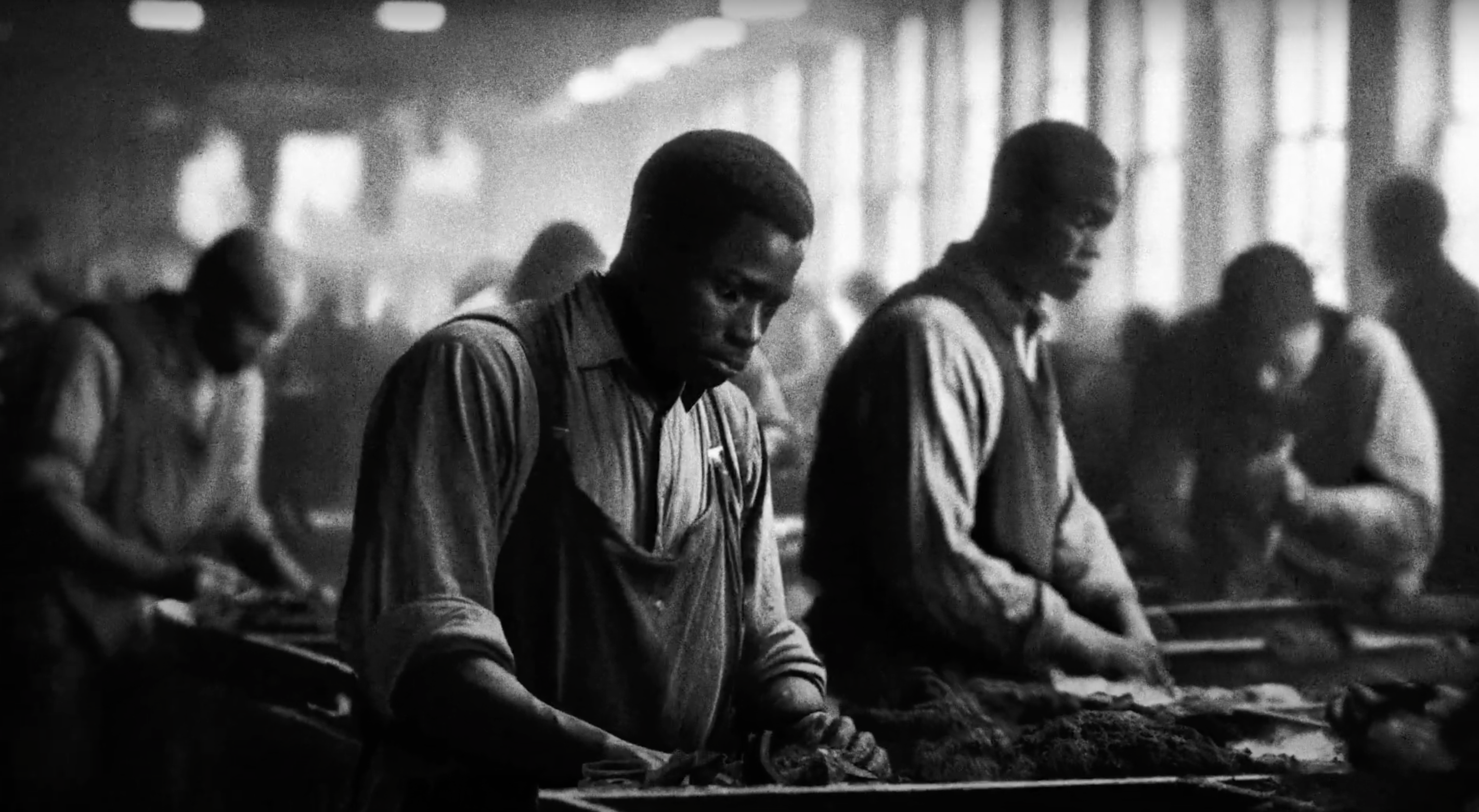
Inspector Bartley Defends the Roundup
Three years after the raid, Police Inspector Lawrence Bartley bragged that it stopped "a reign of terror in the Hill District, caused by Negroes attacking white girls…Every known rendezvous for black men in the Hill District was raided, and 218 [were] brought to Central Station."
By then, Black Pittsburgh looked to its new Black-owned Courier, whose editor, Robert Vann, assured readers "your news is not Jim-Crowed in this paper." Inspector Bartley's testimony had smeared a whole community by portraying "the Negro of Pittsburgh as a brute and a thug," the Courier editorialized. "We deny that such is the case."
Rial Robert Lucas made the Courier’s point—after he served his sentence, he remained married to Irene, and found work at last, as a laborer for Pittsburgh Crucible Steel Company, in nearby Midland, Pennsylvania. At age 39 he was still willing to serve his country. On September 12, 1918, with World War One still raging, he registered for the military draft.
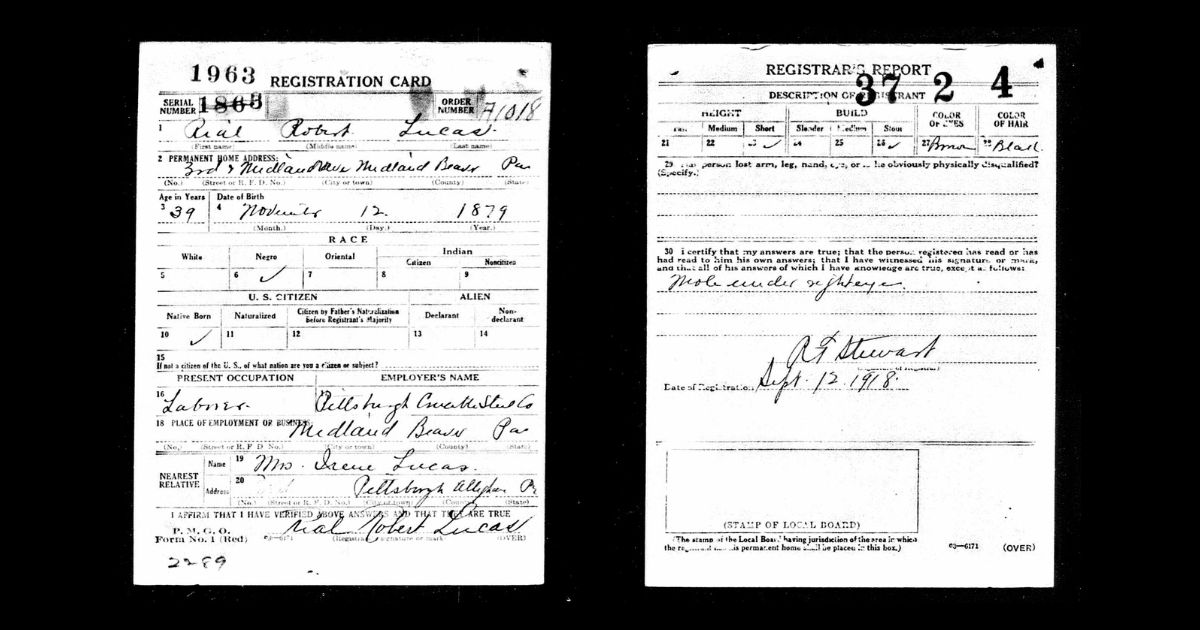
Mr. Lucas’s 1918 draft card.
The mass arrests that had sent Mr. Lucas to prison presaged stop-and-frisk and other police tactics against Black citizens that persist today, along with the mass incarceration that disproportionately affects people of color. In Allegheny County, which includes Pittsburgh, Black residents consistently comprise over 60% of the jail population despite making up just 13% of Allegheny County residents. Roughly 80% of people in those jails have not been convicted of a crime.
About EJI
The Equal Justice Initiative works to end mass incarceration, excessive punishment, and racial inequality.
About this website
Until we confront our history of racial injustice and its legacy, we cannot overcome the racial bias that exists today.
 Learn more
Learn more